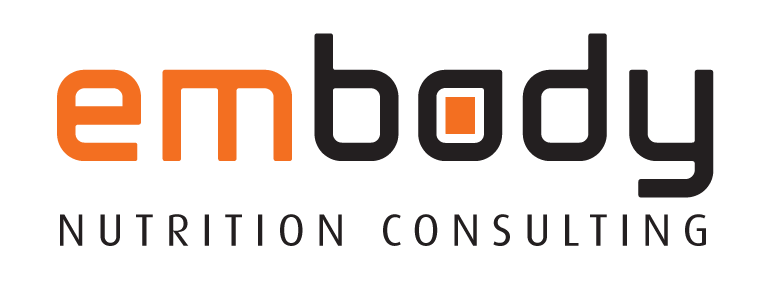Preventing muscle cramping is a popular topic among the exercising community, and if you’ve ever experienced the discomfort of an unexpected cramp, it’s easy to understand why. If you have been lucky enough to evade muscle cramps, they are generally defined as a sudden, involuntary and painful contraction of a muscle.
In the healthy adult population, those who have experienced cramping is estimated to be around 50-60%, and this number only gets higher in the elderly and endurance athletes.
Cramps can generally be broken down into three main groups:
- Pathological factors (occur in metabolic disorders, diabetes, liver disease, neuropathy)
- Idiopathic nocturnal cramps (occur during the sleep with no clear cause)
- Exercise-Associated Muscle Cramps (EAMC), muscle spasms that occur during or after sport or exercise
Exercise-Associated Muscle Cramps (EAMC)
Today we’re going to focus on the cause and treatment for EAMC. These cramps usually resolve on their own after several seconds or minutes, but have been known to last hours (ouch!). They usually occur at the site involved in the exercise you have been doing, for example, in the calf for a long-distance runner. Scientists have long researched the mechanism behind EAMC, but the cause remains very much up for debate. Popular theories include; tight muscles, poor flexibility, poor fitness, inadequate diet, physical overexertion, heat, humidity and sweating.
Theories at the forefront of research include the electrolyte and dehydration theories, and the neuromuscular theory, both of which we will have a closer look at below!
The Electrolyte and Dehydration Theories
The first recorded EAMC dates back to 1908, when miners working in conditions of high heat and humidity reported muscle cramps. This led to development of the still popular electrolyte and dehydration theories – which generally focus on depletion of fluid, magnesium, potassium and sodium via heavy sweating. The sheer amount of electrolyte-rich products on the market (in particular – magnesium supplements and sprays) to heal sore and cramping muscles is a testament to how popular this theory is.
This long-term theory is now challenged by new scientific evidence. Studies on marathon runners and triathletes have found no differences in blood electrolytes (potassium, magnesium, sodium etc.) and hydration levels in those that get EAMC and those that don’t. What’s more – even after the cramp episode stopped in these groups, concentrations of blood electrolytes did not change, suggesting the cramps cessation is not due to normalised blood electrolytes.
Neuromuscular Function Theory
Most scientists now agree the primary cause of EAMC is altered neuromuscular function. This ‘neuromuscular theory’ is slightly newer on the scene, having been put forward in 1977. It can be broken into 2 ‘sub-theories’ – being the peripheral origin or the central origin. Research suggests the central or spinal neuromuscular theory is the primary cause of EAMC.
This theory is essentially based around the idea that tired muscles and/or muscles in the ‘shortened’ or ‘contracted position’ causes an involuntary and sustained contraction. The body’s normal ability to ‘switch off’ the contraction via a message sent to nerves in the spinal cord doesn’t work, causing it to stay ‘switched on.’
Reducing and Treating Cramps
Unfortunately, there’s no absolute prevention for EAMC, but you can work to reduce your risk.
Known risk factors for cramps include a family history, previous occurrence, increased exercise intensity and duration and inadequate conditioning. This explains why people often experience cramps on race or comp days – because you’re usually working at a higher intensity than normal over a longer duration.
Our Top Tips to Reduce Cramps (& Perform Well!)
- Fuel right: Glycogen depletion (inadequate carbohydrate) or low energy availability can contribute to fatigue and in turn – cramping. This is why it’s important to get your nutrition for competition days’ spot on. Fuelling well will set you up to keep fatigue at bay for longer.
- Train smart: Athletes who are well-trained and conditioned for their event or sport experience less cramping. This is why footballers may experience cramps at the beginning of a season when less conditioned. There’s also a theoretical basis emerging for performing exercises that target the neuromuscular system to delay neuromuscular fatigue.
- Hydrate: Though not alone associated with cramping, dehydration may contribute to muscle fatigue, and some research suggests movement of fluid within cells could potentially impact on nerve terminals. Dehydration may also impair the ability of our heart to provide adequate blood flow to the working muscle.
A note on pickle juice: Pickle juice may shorten cramp duration once it occurs – and not because of a high electrolyte content. Because of the unpleasant taste, pickle juice is proposed to chemically stimulate a reflex that decreases alpha motor neuron activity and causes muscle relaxation. It’s possible other distasteful substances could have the same effect.
References:
- Giuriato et al. (2018), Muscle Cramps: A comparison of the two leading hypothesis, Journal of Electromyography and Kinesiology, vol. 41, pp. 89-95
- Jahic et al. (2018), Exercise Associated Muscle Cramp – Doubts about the cause, Mater Sociomed, vol. 30, pp. 67-69
- https://www.sportsdietitians.com.au/muscle-cramps-avoid-at-all-costs/
- https://www.sportsdietitians.com.au/sda-blog/magnesium-cramping-during-exercise/

